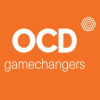According to the World Health Organization (WHO), Obsessive Compulsive Disorder (OCD) is one of the top ten most debilitating illnesses – this list includes mental and physical illnesses. OCD is a chronic disorder, meaning it typically persists for an individual’s entire lifetime. There is currently no cure for OCD. With the proper treatment, however, OCD is an illness that can be managed.
The gold standard for treating OCD is a specific type of therapy called Exposure and Response Prevention (ERP). ERP falls under the general umbrella of Cognitive Behavioral Therapy (CBT) since it works to change thought patterns as well as behavioral responses. In OCD treatment, it is important to work with a licensed mental health professional who specializes in OCD and uses ERP in their practice.
Exposure: This refers to intentionally exposing yourself to the thoughts, images, urges, or sensations that cause your anxiety. For example, an individual whose OCD revolves around harm obsessions might feel extremely anxious when they are cutting up vegetables for dinner because unwanted images pop into their head of hurting their child; this individual has even gone so far as to avoid using knives at all, for fear of bringing harm to their child. In this case, the exposure – agreed upon by their therapist – might be along the lines of holding a knife in their hand while their child is in the same room. For this person, that action will bring up anxiety and an uncomfortable feeling. (Spoiler alert – that can be a good thing!)
Response Prevention: After being triggered, which brings on the anxiety, this part refers to making a choice not to engage in compulsions. In the above example, the individual’s compulsions surrounding their harm fears were: avoiding knives, reassuring themselves that they are a good person who wouldn’t harm their child, and asking for somebody else to be in the room with them when they are cutting up food. Their response prevention, then, might include things such as: purposely using knives instead of avoiding, stopping the self-reassurance, and being alone in the kitchen with their child while they are cutting up a meal.
Exposure and Response Prevention should be used under the guidance of a therapist (at the beginning of one’s recovery journey, at least), and then individuals with OCD will begin to learn how to manage their symptoms independently by practicing ERP on their own. Purposely allowing oneself to be triggered may seem counterintuitive to learning how to manage symptoms, but with the proper strategies in place to resist the compulsions, ERP is an extremely effective tool in allowing individuals with OCD to live a full life.
References
International OCD Foundation. (2021). Exposure and Response Prevention. Retrieved April 17, 2021 from https://iocdf.org/about-ocd/ocd-treatment/erp/
International OCD Foundation. (2021). How is OCD Treated?. Retrieved April 17, 2021 from https://iocdf.org/about-ocd/ocd-treatment/
World Health Organization. (2021). Mental Disorders. Retrieved April 17, 2021 from https://www.who.int/news-room/fact-sheets/detail/mental-disorders
Mollie Albanese
Author

